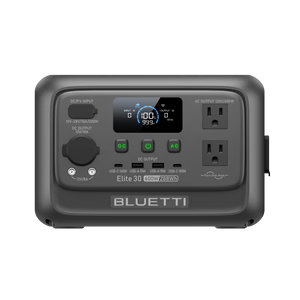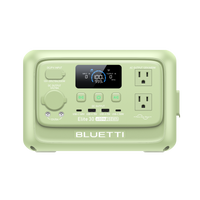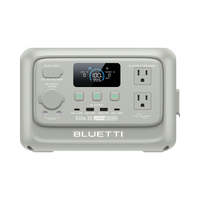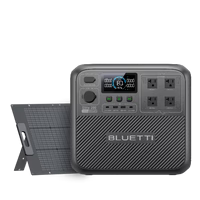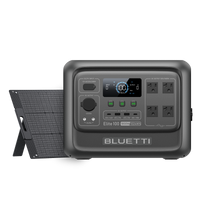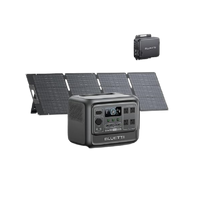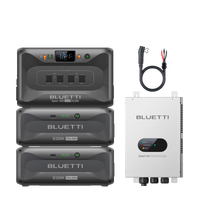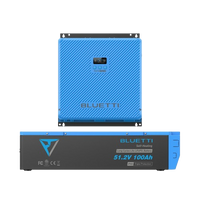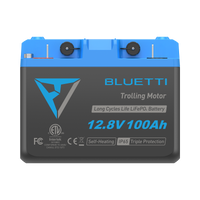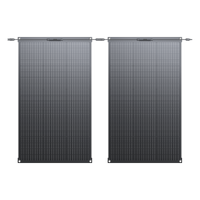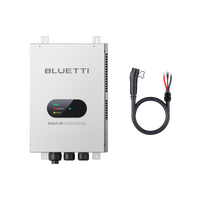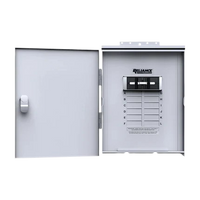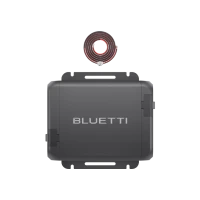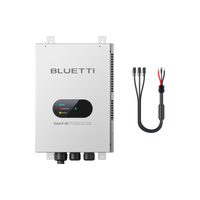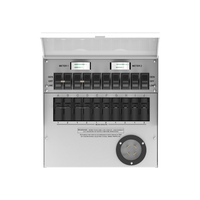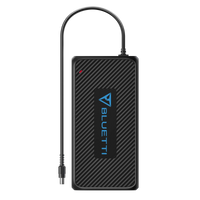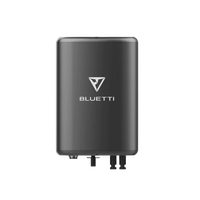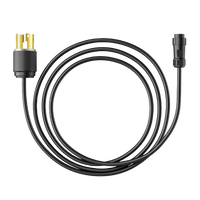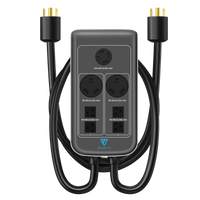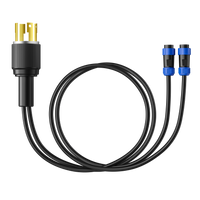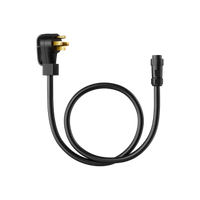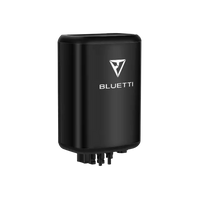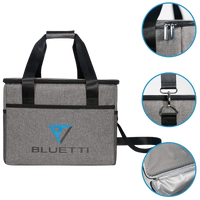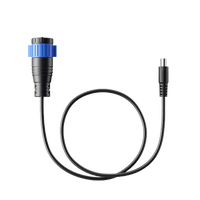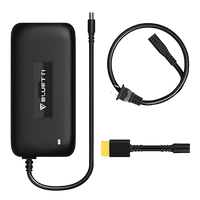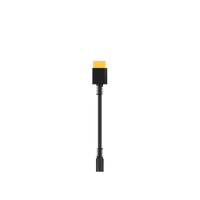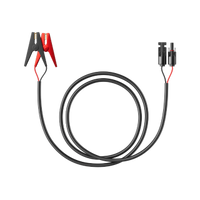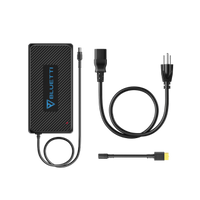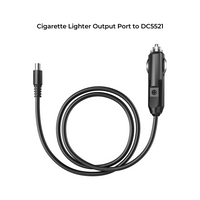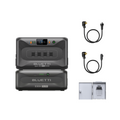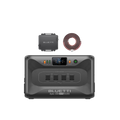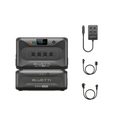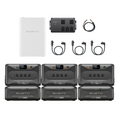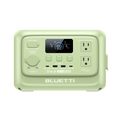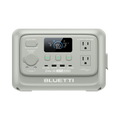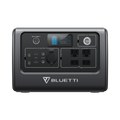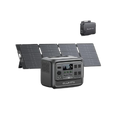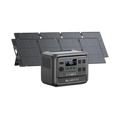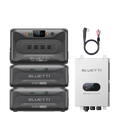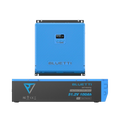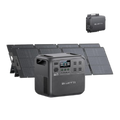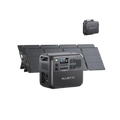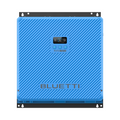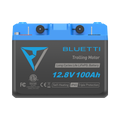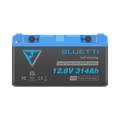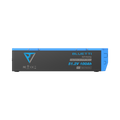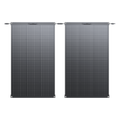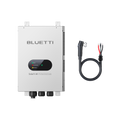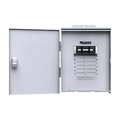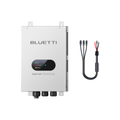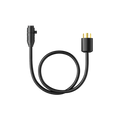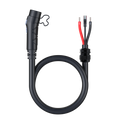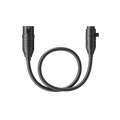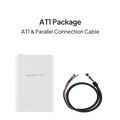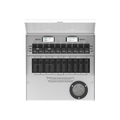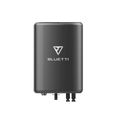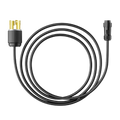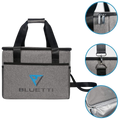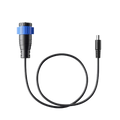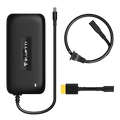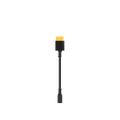Le choix des panneaux solaires influe directement sur la production de votre système en kWh et sur les économies d'énergie que vous réaliserez. Malgré un investissement initial potentiellement plus important, le gain d'efficacité se traduit par des économies constantes, et donc un retour sur investissement accru.
Cet article vous éclairera sur le rendement des panneaux solaires, notamment sur les types de panneaux les plus performants et les facteurs qui influencent leur efficacité et leur coût. Nous examinerons également les critères d'achat des capteurs de lumière naturelle et déterminerons si un kit de panneaux solaires mobiles représente un investissement judicieux.
Qu'est-ce que le rendement d'un panneau solaire ?
Il s'agit d'une valeur qui indique la proportion d'énergie solaire convertie en électricité. Plus le rendement est élevé, plus le panneau peut produire d'électricité. Actuellement, la plupart des panneaux solaires photovoltaïques installés sur les toits des maisons individuelles ont un rendement de 19 à 21 %. Cependant, le secteur des panneaux solaires est en plein développement et les fabricants atteignent désormais des rendements de 22 % voire plus.
À titre de comparaison, le rendement des panneaux solaires n'était que de 14,1 % en 2010, selon les données du Laboratoire national des énergies renouvelables (NREL). Cela illustre clairement les progrès réalisés par la technologie dans le secteur solaire. Bien qu'un rendement de 22 % puisse paraître faible, il faut tenir compte du fait que la plupart des systèmes sont loin d'atteindre un rendement de 100 %. Par exemple, les moteurs à essence des voitures ont un rendement de 25 % et les centrales électriques de seulement 36 %, selon l'Université d'État de Pennsylvanie.
Quel type de panneau solaire est le plus efficace ?
Cette efficacité dépend principalement du type de technologie utilisée. Il existe trois principaux types de capteurs de lumière naturelle disponibles pour un usage résidentiel.
-
monocristallin
Ces systèmes sont généralement de couleur foncée et offrent les meilleures performances. Leur rendement, compris entre 17 et 23 %, est excellent, et leur durée de vie, de 25 à 40 ans, est conditionnée par un entretien régulier. Cependant, leur coût est élevé et leur efficacité diminue par basses températures.
-
Polycristallin
Ces capteurs, de couleur bleue et relativement moins chers, sont cependant peu performants (rendement compris entre 12 % et 17 %). De ce fait, ils nécessitent un plus grand nombre de panneaux pour produire la même quantité d'énergie. Ils sont plus efficaces dans les régions froides et ont une durée de vie de 20 à 35 ans.
-
Couches minces
Ce sont les investissements les moins performants énergétiquement qu'un propriétaire puisse réaliser, leur rendement se situant entre 7 % et 12 %. Ils sont petits, faciles à installer et conviennent parfaitement aux petits projets à faible consommation d'énergie. Cependant, leur durée de vie est courte, de l'ordre de 10 à 20 ans.
En résumé, bien que les systèmes électriques monocristallins présentent les meilleures performances, le choix de ce type de système par rapport aux systèmes polycristallins et à couches minces dépend de votre budget, de l'espace disponible et de vos besoins énergétiques.
Quels sont les facteurs qui influencent l'efficacité des panneaux solaires ?

Les performances des capteurs de lumière naturelle sont principalement influencées par deux aspects clés : l’efficacité des cellules photovoltaïques et les spécifications du système de captation de la lumière solaire.
-
Performance des cellules solaires
L'objectif des cellules solaires est de convertir les rayons du soleil en énergie utilisable grâce à l'effet photovoltaïque (ou photoélectrique). Les panneaux les plus performants disponibles sur le marché sont les panneaux monocristallins et polycristallins, qui fonctionnent avec des cellules solaires en silicium cristallin. Les panneaux monocristallins utilisent des cellules solaires taillées dans un seul cristal de silicium parfaitement uniforme, présentant moins de défauts et donc un meilleur rendement. En revanche, cette technique est plus coûteuse. La fabrication des panneaux polycristallins utilise plusieurs cristaux de silicium, ce qui rend le processus de production plus économique, mais au prix d'une légère baisse de rendement.
-
Configuration du panneau solaire
Un élément de conception apparemment simple comme le câblage d'un panneau solaire peut cependant avoir un impact considérable sur son rendement. Des circuits mal connectés peuvent entraîner une baisse du rendement de l'énergie solaire et réduire la production globale. Le contrôleur ou l'onduleur, qui convertit le courant continu (d.c) du soleil en courant alternatif (a.cPour une utilisation domestique, un câblage adapté est également nécessaire. Si l'onduleur n'est pas compatible avec vos panneaux ou si son câblage est incorrect, votre production d'énergie risque d'en être affectée.
De plus, la production d'énergie des panneaux est influencée par leurs conditions de montage. Sans une réflectivité soigneusement calculée, permettant une conversion optimale de la lumière solaire, le panneau solaire sera inutile. C'est pourquoi, pour pallier ce problème, plusieurs fabricants intègrent un revêtement antireflet au dos du panneau.
Coût de chaque type de panneau solaire efficace
Le coût des panneaux solaires dépend de leur type, de leur rendement et de leur durée de vie. Bien que plus onéreux à l'achat, les panneaux monocristallins offrent souvent un rendement énergétique supérieur (de 17 % à 23 %) et une durée de vie plus longue (jusqu'à 40 ans). Par conséquent, la quantité totale d'énergie produite sur le long terme est plus importante et les économies réalisées sont plus élevées. Actuellement, le prix de ces panneaux se situe entre 0,5 et 3 dollars par watt.
Quant aux panneaux polycristallins, ils sont économiques, avec un coût total d'environ 0,75 $ à 1,00 $ par watt. Cependant, leur rendement énergétique est inférieur (12 à 17 %) et leur durée de vie plus courte (25 à 35 ans).
Les panneaux solaires à couches minces les moins chers (0,85 $ à 1,5 $/watt) avec une efficacité variable (7 % à 12 %) et une durée de vie variable (10 à 20 ans) sont les plus économiques.
Plus de 95 % des systèmes solaires résidentiels actuellement installés sont composés de panneaux monocristallins, reconnus pour leur rendement élevé, ce qui signifie qu'ils nécessitent une surface de toiture réduite pour une production donnée. En revanche, les maisons disposant de petites surfaces de toiture peuvent ne pas accueillir le grand nombre de panneaux polycristallins ou à couches minces nécessaires à la production d'électricité. De ce fait, les installations commerciales sont mieux adaptées à cet usage.
Quels autres éléments dois-je prendre en compte lors de l'achat de panneaux solaires ?
Les données relatives au rendement constituent une information cruciale pour le choix de ces capteurs. Cependant, ce n'est pas le seul critère. La puissance de sortie, qui mesure la quantité d'énergie réelle que le panneau peut générer, est un autre élément important.
De plus, il convient d'examiner attentivement les garanties. Actuellement, la plupart des marques offrent une garantie de performance de 25 ans sur leurs panneaux solaires, ainsi qu'une garantie produit de 12 à 15 ans. Toute garantie inférieure doit susciter la méfiance.
Par ailleurs, la crédibilité du fabricant compte également.Les panneaux solaires représentent un investissement à long terme. Bien que les pannes soient rares, il est important de choisir avec soin des fabricants qui honorent leurs engagements de garantie. Cela garantit la sécurité de votre installation et vous permet de vous adresser directement au fabricant en cas de problème pendant la durée de vie des panneaux.
L'achat d'un panneau solaire portable est-il judicieux ?
Oui, l'achat d'un capteur solaire mobile est une étape incontournable. Voyons pourquoi. Les panneaux solaires portables offrent flexibilité, simplicité et une forte puissance, ce qui en fait l'une des meilleures sources d'énergie. Examinons maintenant trois modèles de la marque BLUETTI.

Le module, vendu à 1 099,00 $ CA, offre un rendement de conversion jusqu'à 23,4 %, garantissant ainsi un fonctionnement optimal. De plus, il est très facile à installer, est doté d'un support intégré, est résistant à l'eau et se replie pour un transport aisé. Par ailleurs, il intègre une puissance solaire de 420 W permettant une charge rapide. Enfin, son film ETFE extra-long lui confère une durabilité exceptionnelle et il est compatible avec tous les modèles BLUETTI.

Pour 999 $ CA, ce collecteur offre un taux de conversion supérieur, garantissant une production d'énergie accrue. Facile à installer grâce à son support intégré, il est également robuste, résistant aux éclaboussures et pliable pour un transport aisé. De plus, il est compatible avec différents modèles BLUETTI, ce qui en fait une option flexible.

Ce capteur solaire est proposé à 599,00 $ CA. Il se distingue par l'utilisation de cellules monocristallines. De plus, il figure parmi les meilleurs grâce à son rendement optimal pouvant atteindre 23,4 %. Il est doté d'un revêtement ETFE durable. Par ailleurs, il est pliable et portable, et peut être connecté à divers générateurs solaires équipés de connecteurs MC4. Enfin, il est garanti un an pour votre tranquillité d'esprit.
Réflexions finales
En définitive, l'efficacité des capteurs solaires est un critère essentiel pour choisir l'énergie solaire. Si les panneaux monocristallins offrent le meilleur rendement du marché, les panneaux polycristallins et à couches minces peuvent être plus adaptés à vos besoins spécifiques et à votre budget. Des facteurs tels que le rendement des panneaux, leur structure et les conditions climatiques locales peuvent influencer considérablement la production de votre installation solaire. De plus, les panneaux solaires transportables, comme ceux de BLUETTI, constituent une excellente option grâce à leur confort et leur flexibilité, ce qui en fait un choix judicieux. Finalement, le choix des panneaux solaires doit se faire en fonction de vos besoins énergétiques, de votre budget et de l'espace disponible.






